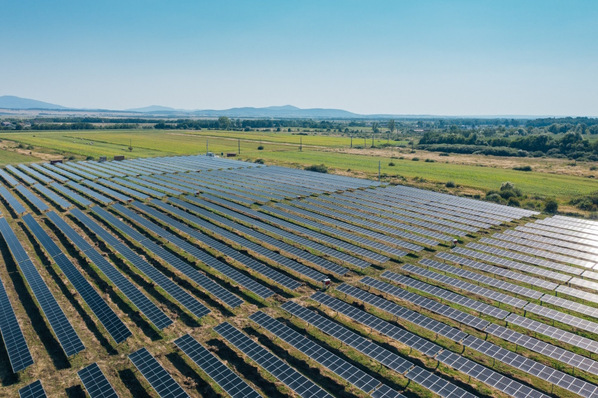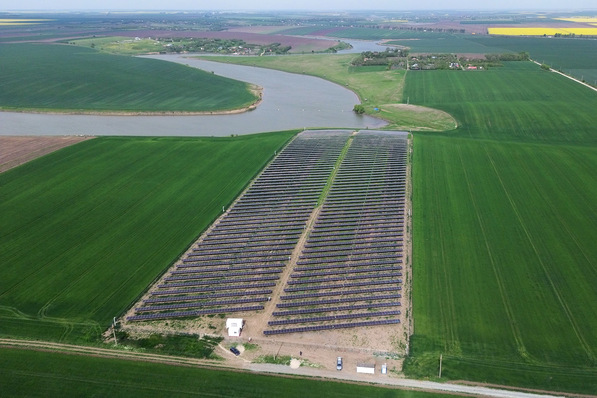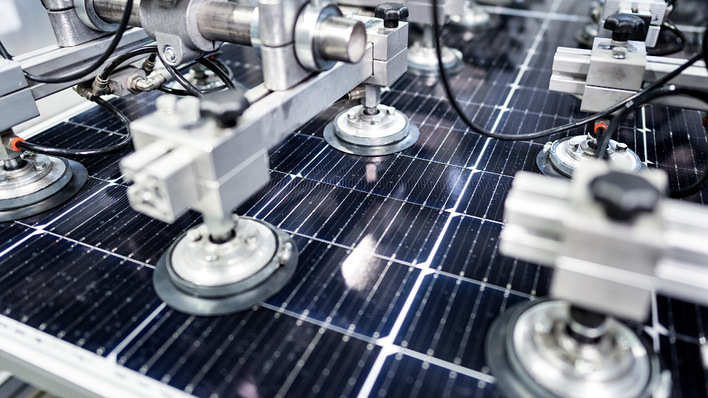Trianel Energieprojekte (TEP) is currently building several solar parks around the community of Halsdorf in western Germany. So far, the Bettingen solar park, southwest of Bitburg, has already been completed. The plant is located on an area of almost eleven hectares and has a capacity of 13.9 megawatts. The generator will be connected to the grid on 5 May.
Other plants are still being planned, designed or built. This means that in the entire Bitburg region, these ground-mounted systems alone generate a solar power output of 78.5 megawatts. The electricity from the power plants can supply a good 19,500 average 4-person households. TEP is planning further projects in the region with a total capacity of 150 megawatts, which will be implemented by 2025.
Municipal participation
TEP has also brought the municipalities on board so as not to jeopardise the acceptance of the projects by the population. "The municipalities not only benefit from climate-friendly electricity, but also from financial participation, which is possible under the Renewable Energy Sources Act," explains Bastian Fiedler, Head of PV Development at Trianel. "This is a sensible way for the municipalities concerned to participate in the value creation of ground-mounted systems. For example, the municipality of Bettingen will receive an annual allowance of 8,000 to 8,500 euros over a planned term of up to 30 years."
See also: Germany: First subsidy-free floating PV plant
This also means that the projects are connected to the grid more quickly. After all, the planning and project development, including all the permits, is no mean feat. "The development of a ground-mounted plant takes around 24 months," explains Thomas Nagel, managing director of Organic Energy, the project partner with whom TEP is realising the plants in Bitburger Land. "The trusting cooperation we experience with the Bitburger Land association municipality is the decisive factor for the rapid implementation of such complex projects," he says, describing the solution.
Breeding birds mapped
But that is not all. When planning the solar parks, the project partners pay special attention to local requirements and nature conservation. For five months, the breeding birds in the region were mapped in Halsdorf and along the A60 and, among other things, more than 30 hectares of compensation areas for skylarks were created. In addition, the precipitation situation was assessed. "We are happy to accept the delay that this has caused for the sake of species protection, but we have to make up for it elsewhere," says Bastian Fiedler from TEP.
Explosive ordnance cleared
In addition, the project partners examined the areas for explosive ordnance in advance and even found some. Dangerous detonators, warheads and grenades as well as tank hatches and caterpillar tracks from World War II were found and had to be cleared. In addition, a soil survey was carried out and investigations were made for archaeologically relevant finds. Of course, a glare assessment also had to be prepared, especially for the installations along the motorway.
Solar power is sent to the high-voltage grid
But the grid capacities were also a challenge. These are already exhausted in the region at the medium-voltage level. That is why the newly founded subsidiary TEP Netze built two transformer stations - one in Halsdorf and another in Badem. The electricity from the solar parks is bundled via these and transformed to the high-voltage level of 110 kilovolts and transported to the consumer.
Also interesting: Huge solar potential for residential rooftop installations still unexploited in Germany
The commissioning of the substation in Halsdorf is scheduled for 5 May 2022, parallel to the grid connection of the solar park in neighbouring Bettingen. "Currently, the last lines to connect the Bettingen solar site to the substation are being laid," says Bastian Fiedler. "We are confident that we will have completed all the work by the beginning of May. Then we can devote our full attention to our next solar projects in the region."
Start of construction for further projects in June
Construction work on the Halsdorf solar site and on the projects along the A60 is scheduled to start as early as June 2022. The substation planned there in Badem will be built from early summer 2022. At the same time, the connection of the open space plants in Gransdorf and Gindorf will take place. Ongoing ecological construction monitoring is being carried out by the engineering firm Karst from Bitburg. Actually, the projects should have been completed long ago. But the adversities of the last few months as well as the effort involved in implementation have led to delays. "The planned winter construction site has now turned into a summer construction site," regrets Bastian Fiedler. (su/mfo)







